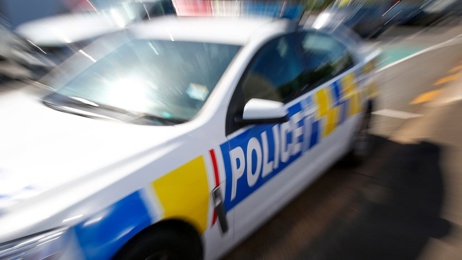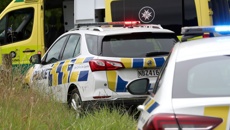Queensland Fire and Emergency Services’ AUS-1 Disaster Assistance Response Team (Dart) answered New Zealand’s call for help and jumped on a number of commercial flights to get to cyclone-ravaged Hawke’s Bay as quickly as possible.
AUS-1 Dart is made up of firefighters, paramedics, communications, mechanics as well as volunteer doctors, engineers and canine handlers and their dogs.
They regularly deal with floods, fires and other natural disasters throughout Australia and the rest of the world.
While Dart team leader Graeme Hall has seen his fair share of devastating disasters, he said the destruction in Esk Valley was something completely different.
Specialist QFES firefighters have been helping New Zealand search and rescue teams in a harrowing recovery effort. Photo / QFES
Flights from Australia to New Zealand were very full said Hall, so his team of 25 came out on three different flights, bringing with them communication equipment, PPE and other equipment to use in the field, because they knew there was a good command centre set up on the ground in Hawke’s Bay.
This made it easier for the Queensland team to get here so quickly, he said.
The first team flew in and got straight to work with a few people, which Hall says gave his wider team some situational awareness and team capability from that point on.
Dart deployed with the New Zealand search and rescue teams into Esk Valley, immediately conducting search activities and damage assessments, as the first priority was to try to determine where people were likely to be trapped.
Graeme Hall (right) meeting with Fire and Emergency New Zealand Commander Russell Woods and his team. Photo / QFES
Providing situational awareness for the team and continuing operations for finding missing people was and continued to be the team’s biggest priority.
When asked about how these floods compared to anything he had seen before Hall said, “being from Queensland we get flooding almost every year as well as other natural disasters, but this is different”.
Hall explained while Australia does have some runoff from some valleys during floods that will damage a few houses, “for most of ours the water comes up then goes back down and it causes damage and silt, but people can usually wash their houses out and in one to six months they can move back in.
“With this flooding, the devastation is such where I don’t think a large number of houses they will ever move back to quite frankly because of the damage and devastation,” said Hall.
The AUS-1 Disaster Assistance Response Team has been doing what it does best and leading a hand in some of Hawke’s Bays’ most devastated areas after Cyclone Gabrielle’s destruction. Photo / QFES
“This is such an extraordinary weather event,” said the team leader.
AUS-1 Dart has been deployed for 14 days and will be in the country until March 2 and 3. They are currently staying at Mitre 10 sports park with some of the NZ Search and Rescue team.
Hall wanted to make sure everyone knew his team don’t drive the operations, the operations are driven by New Zealand Search and Rescue, as well as Civil Defence and a handful of other organisations.
“Our role is to assist with the search and rescue operations so that is what we are doing, we are working really closely with so much closer than we are now integrating our teams,” he said.
Specialist firefighters from QFES have been calling the Mitre 10 park in Hasting their home base while helping with the aftermath of Cyclone Gabrielle. Photo / QFES
They have been calling the integrated search groups Anzac teams.
Since arriving last Thursday AUS-1 Dart has been sent out to Esk Valley, Bay View and Pakowhai.
The team has been working from 8am to 7pm each day and, having trained for many years, they have been enjoying putting their skill set to good use, Hall said.
Being out in the field helping the community is their their passion, he said.
Take your Radio, Podcasts and Music with you

/cloudfront-ap-southeast-2.images.arcpublishing.com/nzme/SGHQ63A72ZEOLFOAJFCZVWEZ6I.JPG)
/cloudfront-ap-southeast-2.images.arcpublishing.com/nzme/I7S7LIXYBBDDTIKCDER4EKPKMQ.JPG)
/cloudfront-ap-southeast-2.images.arcpublishing.com/nzme/I5P5IO5KDFHDVKXYAWPOVY3PEA.JPG)
/cloudfront-ap-southeast-2.images.arcpublishing.com/nzme/MFLD7EGL4JGGDOESPBZC5HQLL4.JPG)








